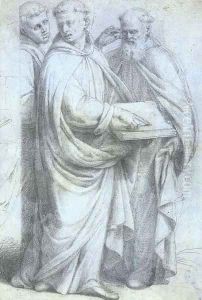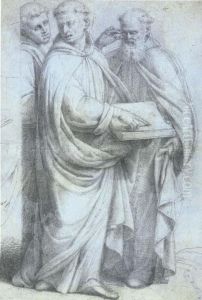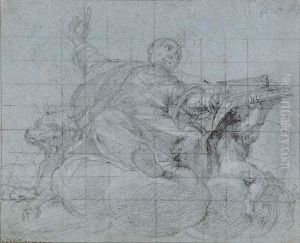Bartolomeo Roverio, Il Genovesino Paintings
Bartolomeo Roverio, known as Il Genovesino, was an Italian painter active during the Baroque period. Born in 1620 in Genoa, Roverio gained his nickname 'Il Genovesino' due to his origins. His work was primarily influenced by the dramatic chiaroscuro and intense emotional expression typical of the Baroque style.
Il Genovesino's early life and training are not well-documented, but it is believed that he was a pupil of the prominent Genoese painter Giovanni Andrea de Ferrari. His style also shows the influence of other leading Genoese artists such as Bernardo Strozzi and Giovanni Benedetto Castiglione. Il Genovesino's works are characterized by their dynamic compositions, strong contrasts of light and shadow, and a vivid palette that enhanced the emotional impact of the scenes he depicted.
Throughout his career, Il Genovesino produced a range of works including religious subjects, portraits, and genre scenes. His paintings often featured figures set against dark backgrounds, a technique that served to heighten the sense of drama and focus the viewer's attention on the subjects themselves.
Despite his talents, Il Genovesino's life was marked by tragedy and hardship. He suffered from poor health and died young at the age of 32 in 1652. His early death meant that his body of work was relatively small, but it nevertheless had a significant impact on the art of the Genoese school. His paintings can be found in various churches and collections in Italy, attesting to his skill and the esteem in which he was held by his contemporaries.
Il Genovesino's influence extended beyond his lifetime, with his approach to painting affecting the work of later artists. His dramatic use of light and shadow can be seen as a precursor to the techniques employed by later painters in the Baroque tradition, and his works remain an important part of the history of Italian art.


